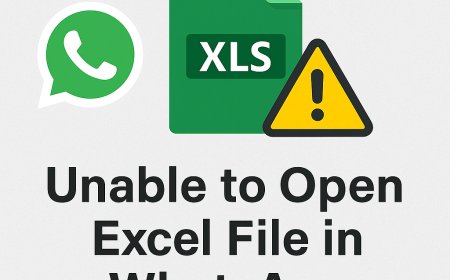How to Write a Press Statement for Social Media
Learn how to write a press statement for social media with clarity and impact. Master tone, structure, and timing for effective digital communication.
In today's digital age, social media has become one of the most powerful tools for public communication. Whether you're a brand, nonprofit, public figure, or government organization, releasing a press statement through social media platforms like Twitter (X), Facebook, LinkedIn, or Instagram can help you reach your audience instantly and directly. But its not as simple as copying and pasting a traditional press releasesocial media requires a more strategic, concise, and audience-focused approach.In this article, you'll learn how to write a press statement specifically tailored for social media, ensuring clarity, professionalism, and impact, no matter the situation.
1. Understand the Purpose of Your Press Statement
Before you start writing, identify the reason you're issuing a press statement. Social media is fast-moving, and clarity is key. Ask yourself:
-
Are you responding to a crisis?
-
Are you announcing a new product, service, or partnership?
-
Are you providing updates on an ongoing situation?
-
Are you correcting misinformation?
The purpose will guide your tone, structure, and the platform you choose. For instance, a crisis response may require a more serious, factual tone, while a launch statement could be more enthusiastic and engaging.
2. Tailor Your Message to Each Platform
Every social media platform has its own unique format, character limit, and audience behavior:
-
Twitter/X: Ideal for short, urgent updates (280 characters). Use threads for longer context.
-
Facebook: Allows for longer posts and more detailed statements. Great for community engagement.
-
Instagram: Use the caption for your statement; the image should support your message.
-
LinkedIn: Best for professional and corporate updates. Use a clear, informative tone.
Write your press statement with the platforms limitations in mind, ensuring your message is digestible and scannable.
3. Start With a Clear and Bold Opening
The first few words of your press statement are crucial. In social media feeds, you only get a few seconds to capture attention. Start with a headline or summary sentence that clearly conveys the main message.
Examples:
-
We are aware of the recent concerns and are taking immediate action.
-
Today, were thrilled to announce a major partnership with [Company Name].
-
Due to unforeseen circumstances, our July event has been postponed.
Avoid vague openings. Go straight to the point while remaining respectful and professional.
4. Keep It Concise and Direct
Unlike traditional press releases, social media requires brevity. Avoid jargon, long explanations, and overly formal language. Your audience should understand your message in the first few seconds.
Use:
-
Short sentences and paragraphs
-
Plain language
-
Bullet points or emojis (where appropriate) to break up information
For example:
- Update: Our website will be temporarily unavailable tonight from 10 PM12 AM for maintenance. We appreciate your patience.
This is a simple, informative, and polite way to communicate a change.
5. Include a Link or Visual for More Information
If your press statement requires more detail than what social media allows, include a link to a full version on your website or a news portal. You can also use a branded image, infographic, or short video to support the message.
Visual content helps:
-
Boost engagement
-
Reinforce brand identity
-
Make your message more memorable
Just make sure any visual elements align with the tone and seriousness of your statement.
6. Time Your Statement Strategically
When posting a press statement on social media, timing is everything. If it's a crisis response, publish your statement as soon as accurate information is available. For announcements or updates, consider when your audience is most active.
General guidelines:
-
Weekdays, during business hours, typically see higher engagement.
-
Avoid late-night posts unless it's an emergency.
-
Coordinate across platforms to maintain consistency.
7. Use the Right Tone and Language
Tone matters. On social media, the wrong tone can escalate situations or appear tone-deaf. Match your tone to the context of the message:
-
Crisis or apology: Calm, empathetic, and sincere
-
Announcement or celebration: Upbeat, confident, and informative
-
Clarification or correction: Neutral, fact-based, and respectful
When writing a press statement for social media, always anticipate how the audience might perceive your words. Think from their perspective.
8. Anticipate Questions and Reactions
After posting your statement, expect questions, support, criticism, or even backlashespecially if the statement involves sensitive topics. Prepare for this by:
-
Assigning someone to monitor and respond to comments
-
Creating a list of FAQs or a follow-up post if needed
-
Remaining calm, transparent, and respectful in all replies
Never ignore engagement, especially during crises. Responsiveness helps maintain trust.
9. Proofread and Get Approval
Even on fast-moving platforms, accuracy matters. Always proofread your statement for grammar, tone, and factual correctness. If you're part of an organization, ensure the appropriate team or leadership approves the message before publishing.
A single typo or error can undermine your credibility or lead to misinformation being spread.
10. Monitor and Measure Performance
After publishing, track how your statement performs. Use platform analytics to review:
-
Engagement (likes, comments, shares)
-
Reach and impressions
-
Click-throughs (if you included a link)
This data helps you refine future statements and understand audience sentiment. If the statement underperforms or causes confusion, consider issuing a follow-up or clarification post.
Final Thoughts
Social media has transformed how organizations communicate with the public, making it faster, more direct, and more visible than ever. Writing an effective press statement for social media requires a blend of clarity, brevity, and strategy. By understanding your platform, tailoring your message, and engaging with your audience professionally, you can manage public communication with confidence.Whether you're responding to a crisis or announcing something exciting, a well-crafted social media press statement helps you stay in control of the narrative and maintain public trust.
































